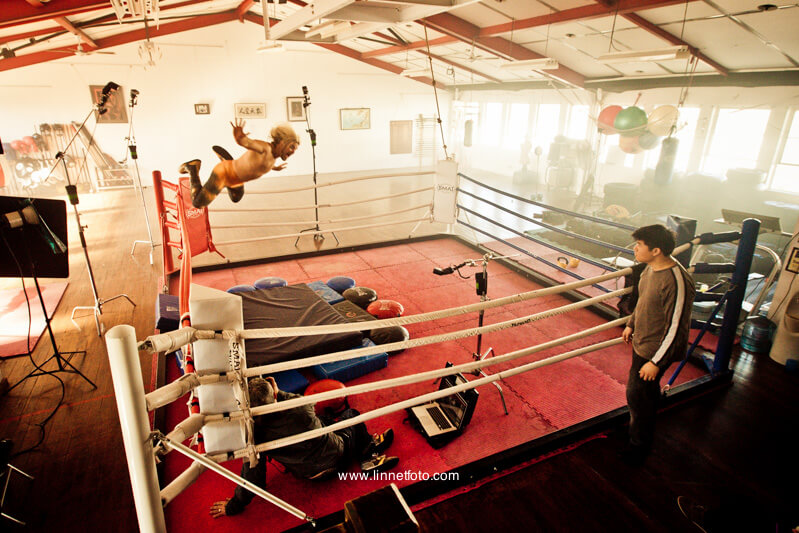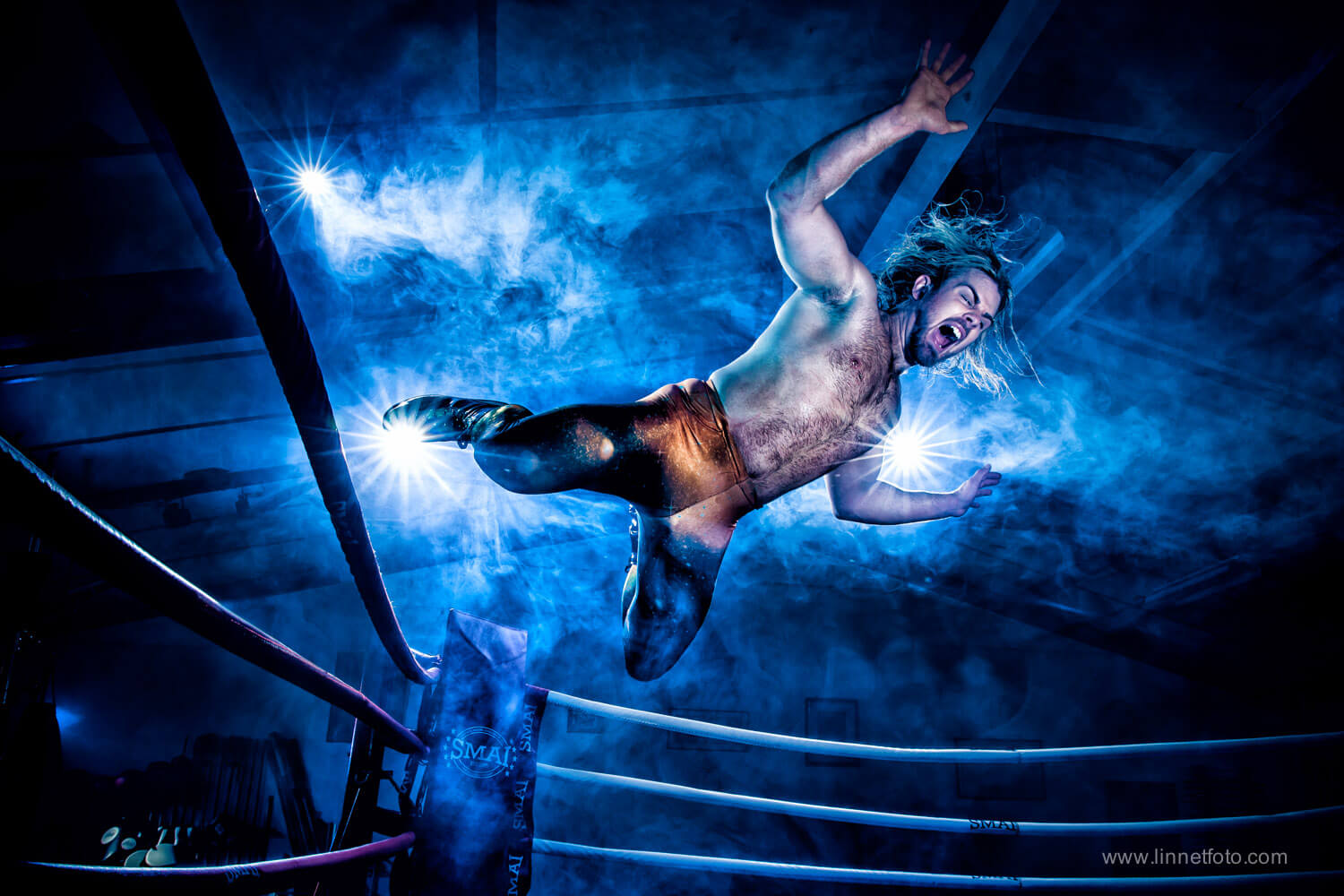- Using Multiple Flashes by Daniel Linnet
-

Once comfortable with using a single Speedlite off-camera, progressing to a second, third or even fourth Speedlite becomes much easier. Complex lighting setups won’t seem so daunting.
First decide on your basic, non flash exposure. This could be either correctly balanced for the available ambient light or set at a specific exposure to eliminate it. The most important is to decide on what aperture you want to shoot at. This will be your main target around which all the lights will be adjusted. Let’s use f8 as an example:
First the base exposure is set to make sure the important detail of the Cocktail sign is retained. Two Speedlites are then turned on and placed just out of frame on either side to create the symmetrical dramatic lighting. The flare was purposely left in the frame to add to the atmospheric quality of the environment.
When setting up multiple Speedlites, I always like to test each one out individually first; fine tuning the position as well as the power to my pre-determined ratio. Take a shot to understand exactly what effect each one has on the composition and the subject independently before switching all on together.
To control and adjust each light individually from your STE-3 Controller or master unit, make sure to allocate each light to it’s own group (A,B,C,D or E)
Start with the placement and adjustment of your main light, the 'key light' (think of it as the sun). Being the main light on the subject, this is normally adjusted to give you your pre-determined aperture (f8, in this case), although it is also common to to go slightly under (up to 1 stop) the base aperture for a moodier result or slightly over ( up to ⅔ stop) for a brighter feel.
Once you have determined the exposure of your key light, you can then then start thinking if you want your other light brighter or darker, and by how much.
When using in ETTL mode, setting the ratios on your controller is as easy as dialling in a +/- EV value for that particular group in relation to the key light. For manual flash adjustment just select the appropriate power value instead (Full, ½, ¼ —> 1/128). For example:


You don’t always need to use shapers and bounce when working with Speedlites off camera. I find that often just a couple of simple bare heads on stands give the most realistic interpretation of a scenario.
The results have more contrast with deep dark shadows.
Two Speedlites are used in a simple configuration. Both are bare heads to achieve the harsh style of arena lighting. Rear light is gelled magenta and aimed at the camera to replicate the feel of being ring side. The rear lighting also helped to highlight the airborne water.
Daniel Linnet is a Sydney based commercial, fine art photographer and educator, specialising in portrait, automotive and the environmental photography. A master of photography with the Australian Institute of Professional Photography, Daniel also founded and runs Sydney Photographic Workshops
Don't forget to check out Daniel’s portfolio and workshops

Discover the key differences between Canon's EOS R mirrorless, DSLR, and PowerShot cameras. Compare features, pros, and ideal users to find your perfect match.

We break down their key specs, features, and best use cases to help you pick the right one.

Beginner's guide to street photography

How should you pick your next lens? Learn about lens types, focal lengths, aperture, and compatibility to help you choose the perfect lens for your needs.

Whether vlogging roadtrips or photographing family frolics, these cameras are perfect for capturing your summer highlights! Which will you choose?

Master fireworks photography with expert tips on timing, focus, exposure, and creative techniques. Discover top Canon cameras and lenses for stunning results.

Canon has expanded the new generation, L-series range of Hybrid lenses.

The full frame EOS C80 has arrived, joining Canon’s dynamic range of Cinema EOS cameras.

We outline the most exciting upgrades which are a testament to how the EOS R5 Mark II continues to reflect Canon’s commitment to innovation. Whether it be stills or videos, the EOS R5 Mark II is the camera that helps you master the moment.

EF lenses vs RF lenses- We explore the top 5 reasons why Canon’s RF system of lenses offers superior quality compared to EF lenses. How to choose which is best for you.
